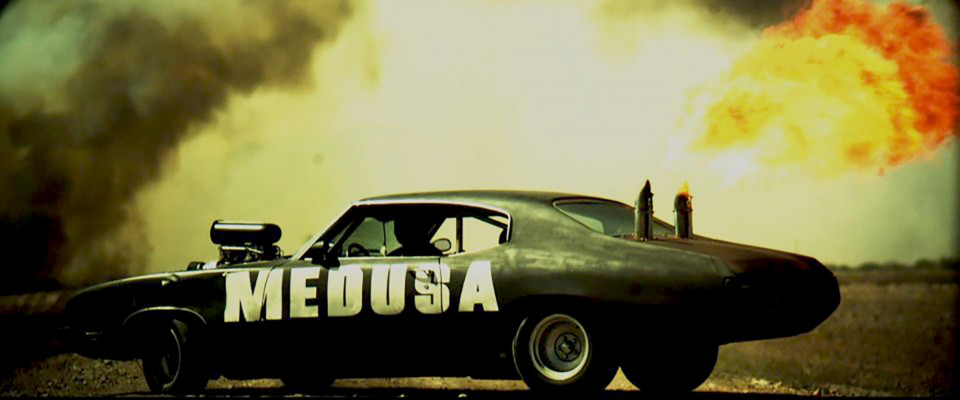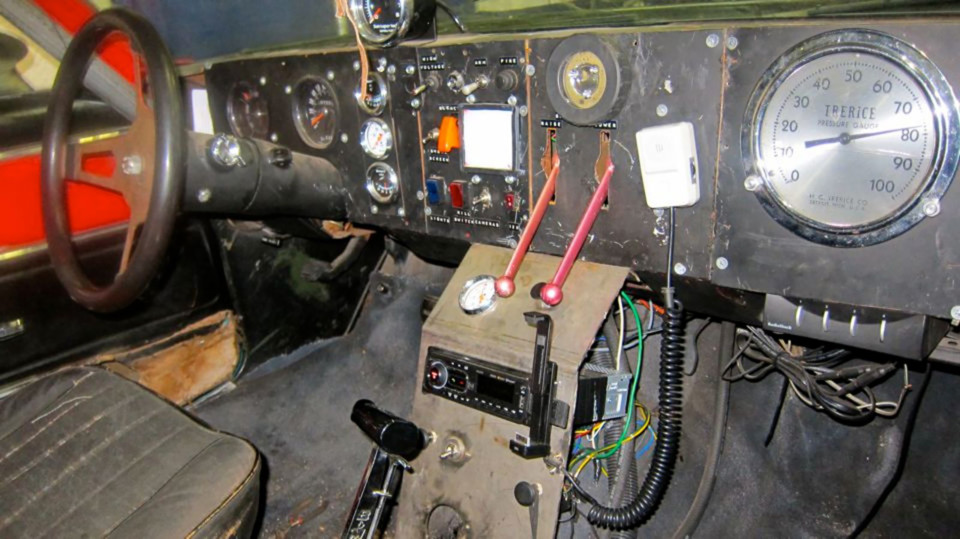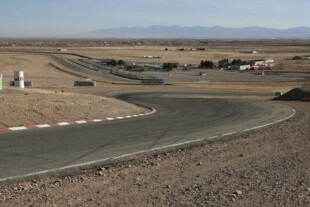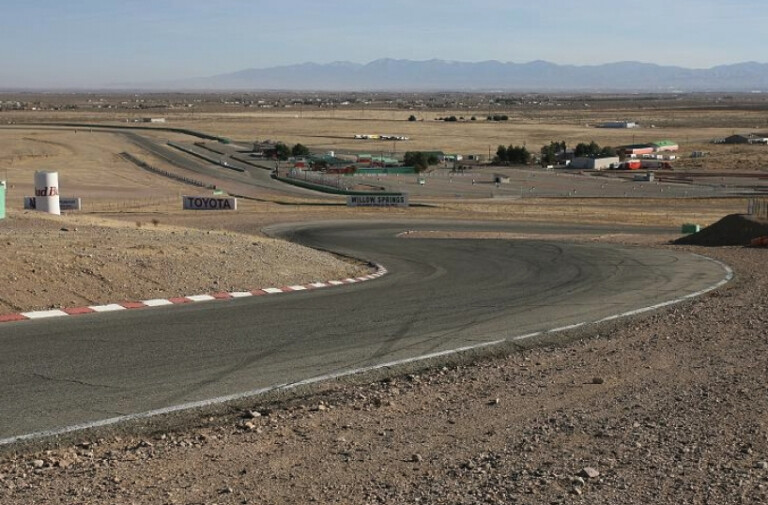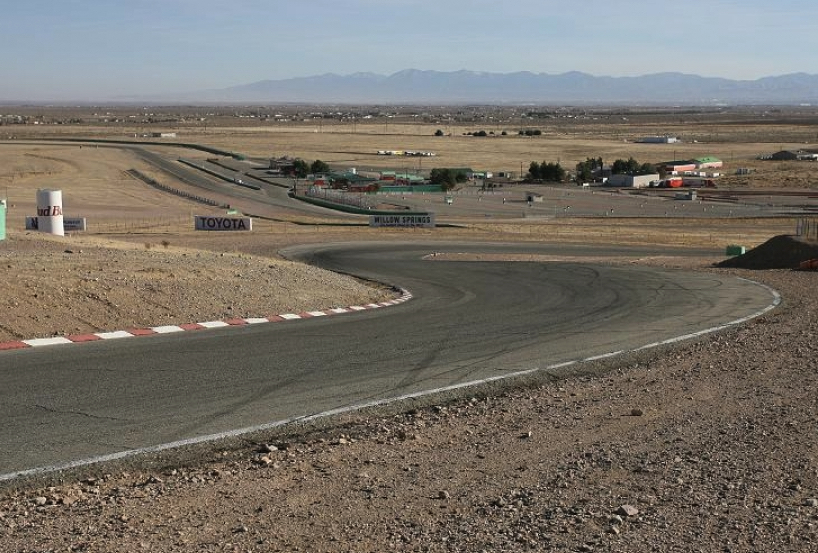I’ve been a student of film my whole life. As a film-school graduate, I have watched thousands of movies in my time. I’ve taken in everything from silent classics to more obscure modern indie and art films with fervor. Every once in a while I am told about – or otherwise become aware of – a movie that somehow slipped under my radar. Such is the case with a remarkable, disturbing, and somewhat perplexing, low-budget independent called Bellflower.
Bellflower was picked up and released by Oscilloscope in 2011, after having been the “buzz movie” at that years’ Sundance Film festival. My ignorance of Bellflower honestly surprised me, as it is just the sort of film I am attracted to, and features a monster muscle car. Bellflower isn’t a car movie per se, and thus, not really suitable for analysis in my other monthly column, Rob’s Car Movie Review. It is however, a no-brainer for me to take a look at the car in this month’s edition of Rob’s Movie Muscle!
Bellflower was the result of an auteur effort by a young, unknown filmmaker, Evan Glodell, he not only wrote, directed, produced, and starred in the film, but even modified a digital camera to achieve the look he wanted for his movie. Allegedly produced for the remarkable sum of only $17,000, the movie co-stars Jesse Wiseman, Tyler Dawson, and the ethereal Rebekah Brandes.

Bellflower’s auteur-style filmmaker, Evan Glodell (left) wrote, directed, produced, and acted in the movie. He also built Medusa, the post-apocalypse car of Mad Max’s dreams. (Image courtesy of Oscilloscope.)
The film tells the story of two millennial slackers who are obsessed with Mad Max. They spend their free time building flame-throwers and weapons of mass destruction, in the hopes the apocalypse will transpire and pave the way for their imaginary gang, Mother Medusa, to rule the wasteland. They become sidetracked in their obsession when one of them becomes romantically involved with a charismatic femme fatale.

Woodrow’s (Glodell) fantasy life is interrupted by a chance encounter with Milly (Wiseman), a free-spirited femme fatale. (Image courtesy of Oscilloscope)
The most concerted effort the pair endeavors in to fulfill their post-apocalyptic fantasy is the purchasing of a neglected 1972 Buick Skylark and modifying it into Medusa, a muscle car suitable for the likes of the Road Warrior himself.
Buick’s long-running Skylark was hardly a muscle car in 1972. It was a rather pedestrian car, available in two-door, four-door, wagon, and convertible configurations. The Skylark was best suited as a grocery-getter for old folks and busy moms. They were offered with a base 350ci V8 engine putting out a measly 145 hp and a “performance” motor that added two barrels to the carb, but only upped power to a milquetoast 180 ponies.
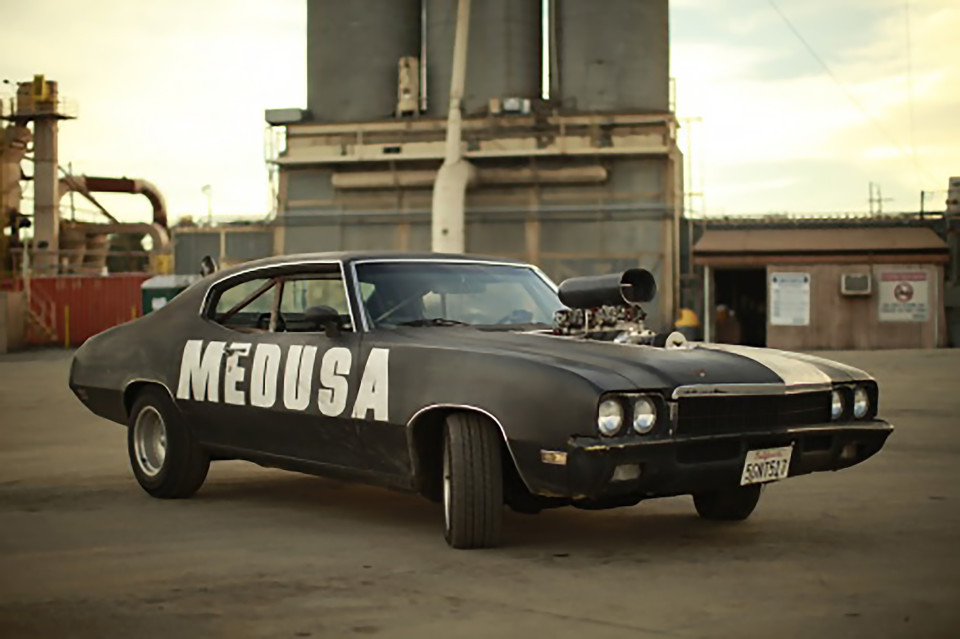
The Skylark was chosen for its menacing looks and room under the hood necessary to cram stuff in there. (Photo courtesy of Coatwolf Productions.)
It did have a svelte and muscly-looking body that wasn’t vastly inferior in styling to the contemporary Chevelles and Olds 4-4-2s, though. The A-body also sported a large enough engine bay to accommodate anything the hardcore modder might want to install in it.
It is the latter facet they obviously sought to take advantage of for the protagonists in Bellflower.
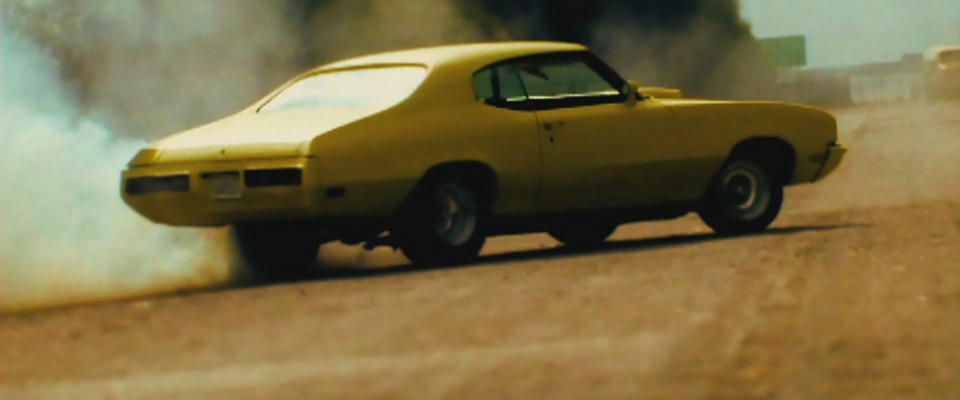
Here is Medusa’s first appearance in the film, pre-modifications. This is the way she looked when she was bought for $2600, on Craigslist. (Image courtesy of Oscilloscope.)
The run-of-the-mill Skylark was purchased from a Craigslist ad for $2600, and built up by Glodell himself.
Everything added to the car was fully functional, unlike most movie cars that are all show and no go. Which, in the case of Medusa, is a veritable James Bond arsenal of goodies!
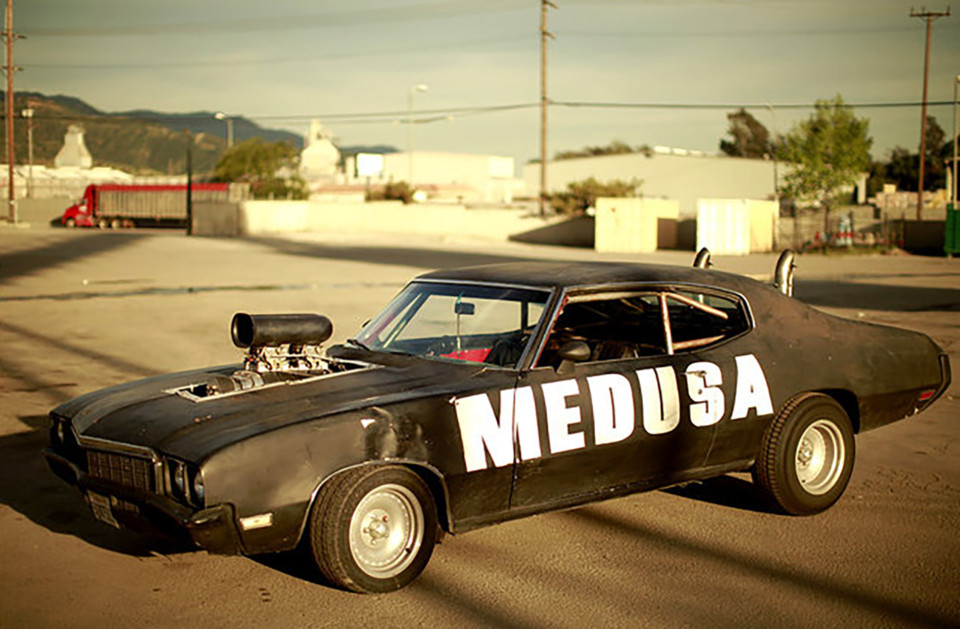
This production still clearly showcases Medusa’s Weiand 6-71 supercharger, rollcage, flame throwing big-rig upright exhausts, and stealth-bomber paint job. (Photo courtesy of Coatwolf Productions.)
Glodell started modding by adding a Weiand 6-71 supercharger. He cut the hood to allow the blower to poke through. The supercharger gave the Skylark’s anemic lump some serious get-up-and-go. A customized exhaust system with an x-pipe yielded an exhaust note that has to be heard to be believed.
A posi rearend was then installed to better transmit all that grunt to the ground. Hydraulic, active rear suspension with dash-mounted controllers was added as well. A 30,000 volt (!) ignition system capped off the performance parts.
Glodell didn’t stop there. For Medusa to be a car befitting a post-apocalypse environment where adversaries lurked around every bend, he equipped the car with functional bleach-sprayers behind the rear wheels for “drift mode.” The sprayers act as a Goldfinger-style smoke-screen emitter. Medusa also sports a PA system, three surveillance cameras with dash-mounted monitor, a self-contained oxygen supply, a rollcage, and a stowable, fold-down rear seat.
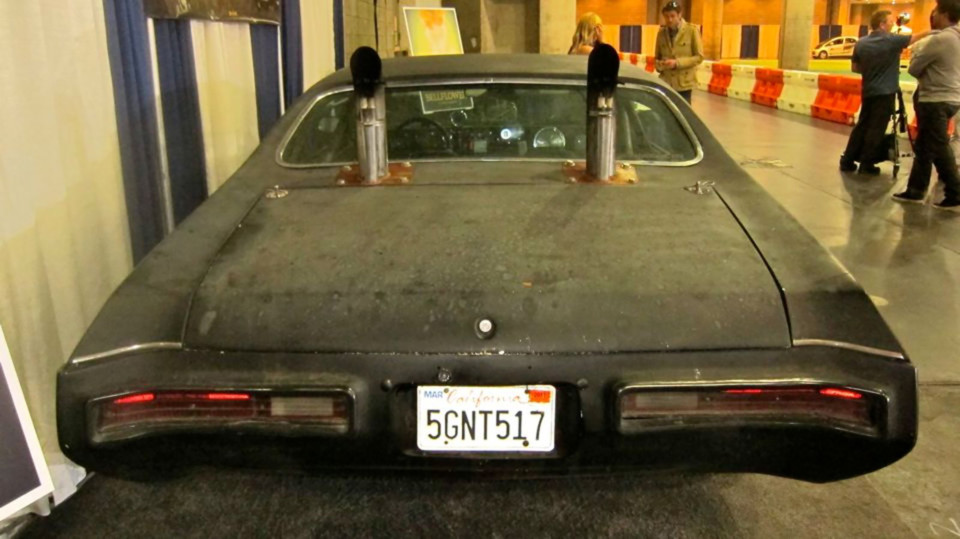
Here is a rear shot of Medusa with her twin, fire-belching exhausts. (Photo courtesy of Jalopnik.com)
In spite of all these mods, the most memorable in the film is a pair of big-rig inspired exhaust stacks with diesel fuel injectors and igniters that enable them to spew twenty-foot high flames!
The car’s dash is a veritable maze of switches, dials, gauges, and controllers. The cheap, aftermarket-looking steering wheel is the pièce-de-rèsistance. Capping off the car’s sinister look is a matte-black paintjob worthy of a B-2 bomber with the car’s moniker, Medusa, stenciled on the sides.
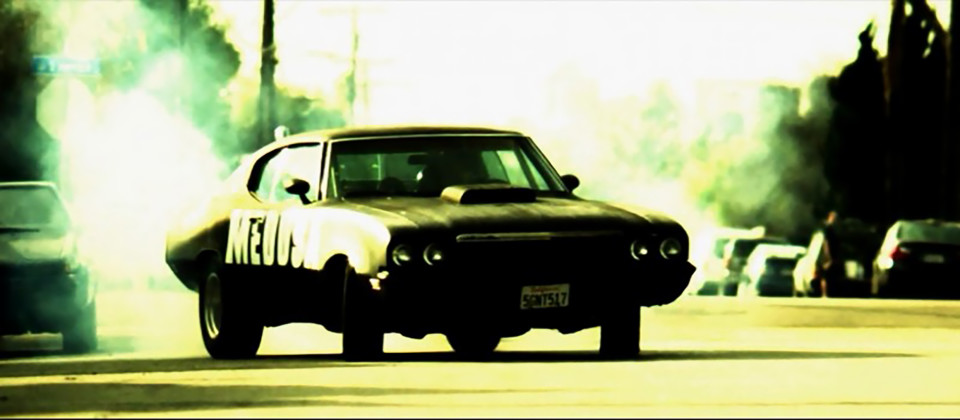
Medusa is given a thrashing, and some remarkable burnouts and slo-mo drifts are performed. (Image courtesy of Oscilloscope.)
Throughout the latter half of the film, Medusa is given a thrashing, and some remarkable burnouts and slo-mo drifts are performed. Awesome stuff.
The film’s making-of video includes a segment devoted to Medusa’s features. It’s well worth watching to see Medusa rip some gears on busy daytime Los Angeles streets. You’d be well-advised to check it out – along with the film itself – because, well, Medusa simply rules!




